Job Kenyon - Raritan Fire Chief 1858 - 1891
by Bruce Doorly |
 |
Last month on the “Somerset County’s Journey to the Past Weekend” one of the designated places for people to visit
was Raritan’s Historical Firehouse on Anderson Street. At this visit this author saw that the Firehouse, which was built in 1892,
had many historical artifacts on display. There were photo albums, articles and other information out on tables.
But it was one poster sized old photo of a fireman that was permanently mounted on the wall that caught the eye of this author.
My tour guide, ex-Raritan Fire Chief Carl Memoli, tells me his name is Job Kenyon who was Raritan’s fire chief from 1858 to 1891.
His tenure is longer than any other Raritan fire chief. I am told that the helmet he is wearing in the photo is hanging on the wall at
Raritan’s other firehouse. I am now curious to know more about this Job Kenyon. I begin my research and fortunately I am able to find information on him and write this article. |
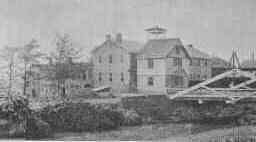 |
Job Crane Kenyon was born in Newton, New Jersey in 1834. His middle name was in honor of his maternal grandfather
Nathaniel Crane who was a prominent revolutionary war soldier who was a dispatch rider for George Washington while his army was fighting
against the British in New Jersey.
In 1843, when Job was nine years old, his family moved to Raritan. At that time there were only a handful
of houses in town. But a canal had just been completed for the purpose of attracting manufacturers along side it. Job’s father
David Palmer Kenyon came to Raritan to do just that. He setup a business that made machinery that was used in farming and other industries.
They erected several buildings between the canal and the Raritan River. |
The Kenyon Building Complex along
the Raritan River in 1891. |
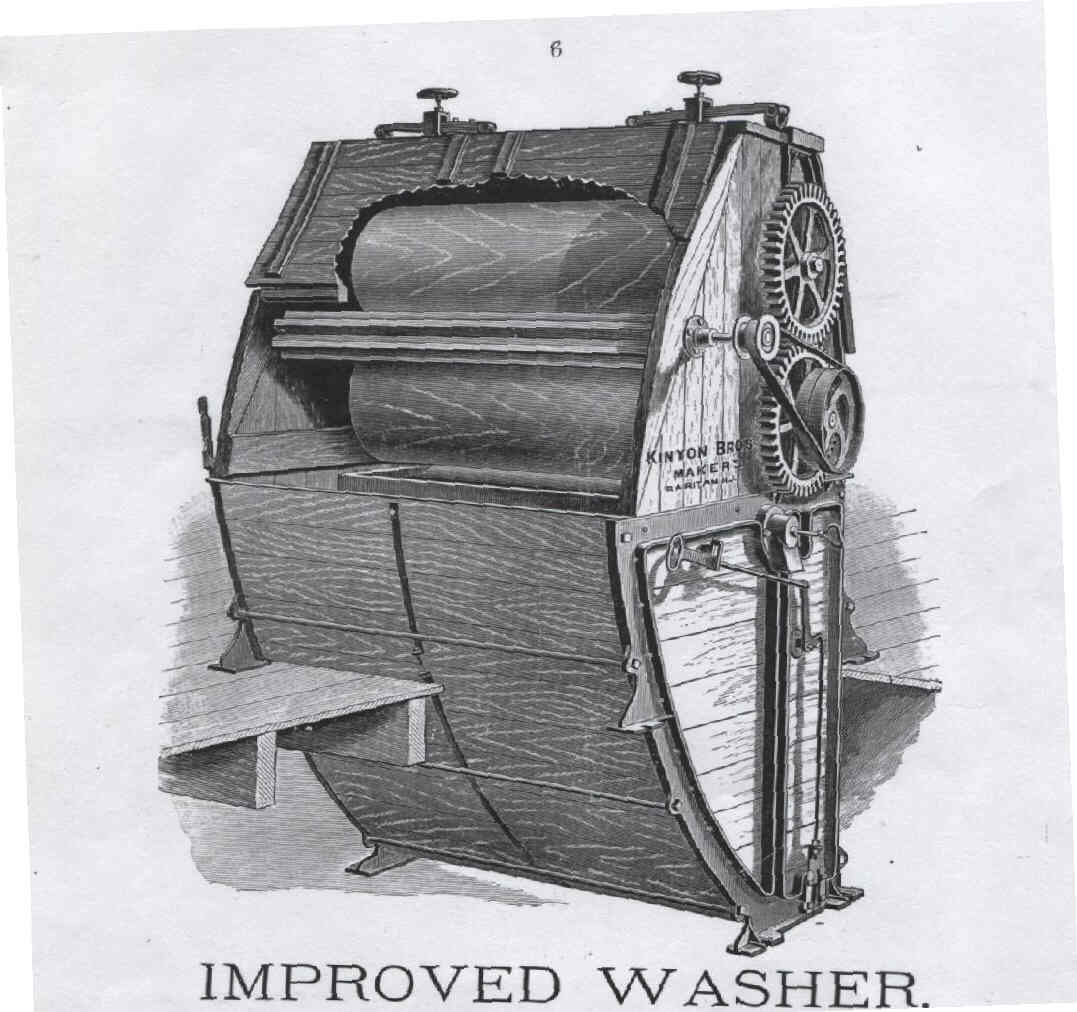 |
Job Kenyon initially bypassed his father’s business and headed out of Raritan to start his career in New York
with an iron merchant company. It was in New York that Job first became a volunteer fireman. After a few years in New York, he returned to Raritan.
He, along with his brother David Randolph Kenyon, took over the manufacturing business that his father had started.
The firm would then take the name Kenyon Brothers. |
| One of the early products |
 |
The business became part of the fabric of Raritan as it was one of the first manufacturing plants and
it employed dozens of local people. After a few years, Job and his brother expanded the business to include the manufacturing of mill machinery.
That was a wise decision as the other big manufacturing business in Raritan was the Raritan Woolen Mills. |
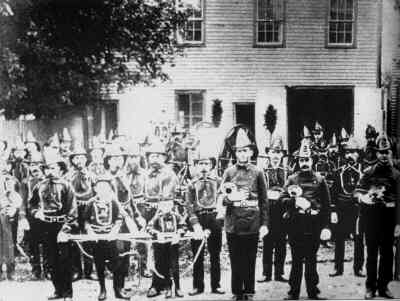 |
Since he had a stake in the town, it was vital for Job to see that the town would prosper.
In that era of mostly wooden structures, a good fire department was necessary. Job Kenyon would join the fire department and by 1858
become the chief/foreman of the department. |
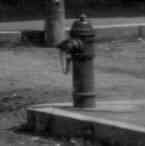 |
Job Kenyon would head the Raritan Fire Department for thirty-three years in total (1858 to 1891).
A lot of things changed during this time. First, the town grew tremendously. The location of the firehouse changed.
He saw the firehouse move from its first location on Wall Street to the next location on Second Street by where the municipal building is today.
The way fires were fought changed as well. In the “first era” of firefighting water was obtained from the canal or
from one of the four cisterns located around town. It was then manually pumped in shifts by 6 to 8 firefighters at a
time through the hoses toward the fire. Years later a “second era” started in 1881 when water lines were laid down in the town.
This put fire hydrants with pressurized water on many corners.
|
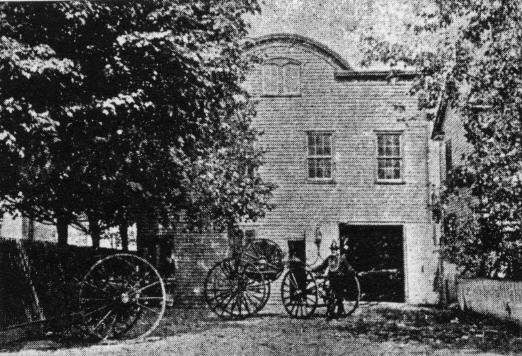 |
He and his department saw that no fires got out of control – no small task back then.
Often fires would destroy several buildings or even a portion of town.
In his tenure the fire department became a social center in town running many activities.
|
 |
When Job Kenyon stepped down as Fire Chief in 1891 the firemen honored him with a surprise tribute dinner.
A speaker at that dinner said of him “Since 1858 you have been at the head of this fire department …
and it is your individual effort that has resulted in the present efficiency of our company.”
Job would say a few words at the dinner himself praising his men saying “You have stood by me … I cannot recall a single instance when an order of mine has ever been disobeyed.” He went on to say that while he was no longer the chief that he would still be a regular fireman stating “ I remain a member of the fire department … the sound of the fire alarm still puts a fire in me and I must get there.” |
 |
As for the Kenyon Machinery business, he would run the company till 1895 when other younger family members took over.
Job did not sit idle after he left the family business. He later become president of the Raritan Saving Bank –
the town’s only bank. He also served some time on the Board of Education. He was a regular attendant at the Third Reformed Church
where he was involved in many of their activities.
|
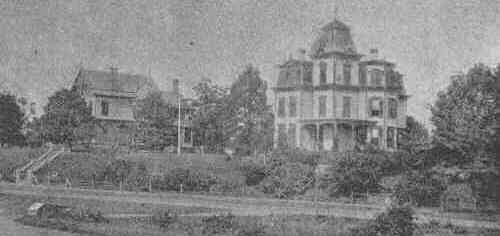 |
Tragically, in March of 1918, at the age of 83, Job Kenyon would meet his death in front of his home in Raritan.
While trying to avoid an out of control bucking horse he accidentally stepped in front of a moving trolley car.
He was knocked to the ground and rendered unconscious. He was carried into his home to be cared for, but died later that night.
The town of Raritan mourned the loss of one of their founders and leading citizens. |
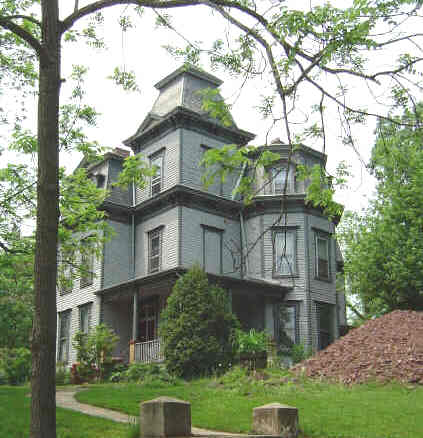 |
As of 2018 his old home still stands. Built sometime in the 1860s it is a large home that was well-constructed for its era.
It is on Somerset Street across from where the Basilone Statue is now located. It has a distinct architecture that leads some to
call it a haunted house. Today the outside is damaged and in need of repair.
The Kenyon Machinery business lasted over a hundred and fifty years. In the 1990s it moved out of Raritan to Route 22 in Bridgewater.
Then around a decade ago it went out of business. The site of what had been the Kenyon Machinery complex along the Raritan River
was just knocked down last year.
The fire department that Job Kenyon built continues to this day. The motto that was established in his day “That where duty calls -
there you will find us” is still the motto of the fire department today.
|










